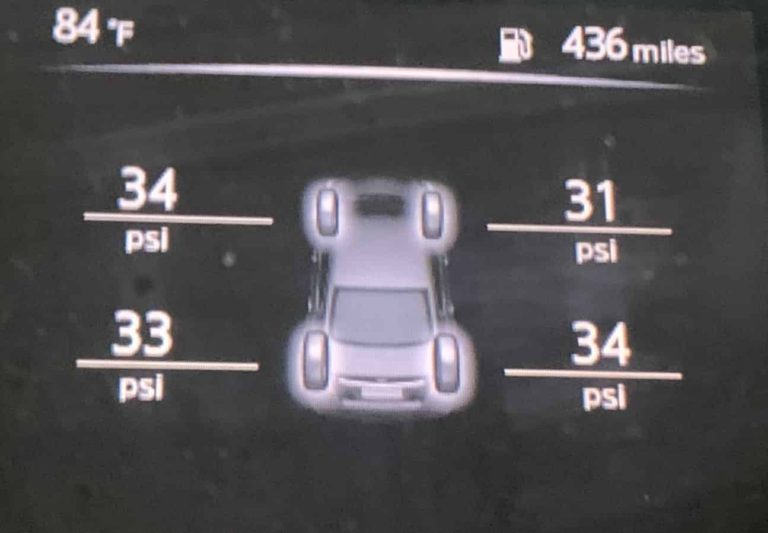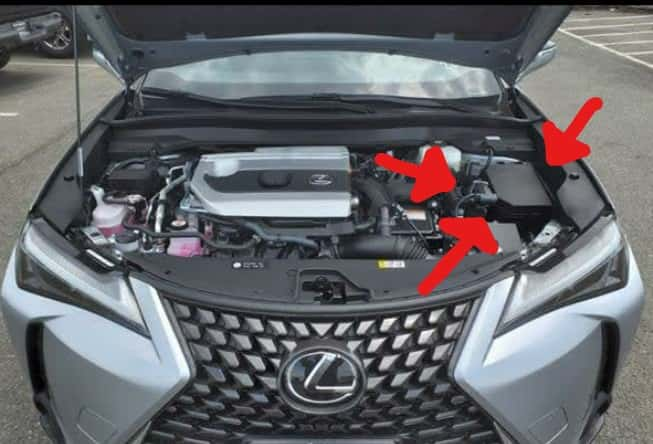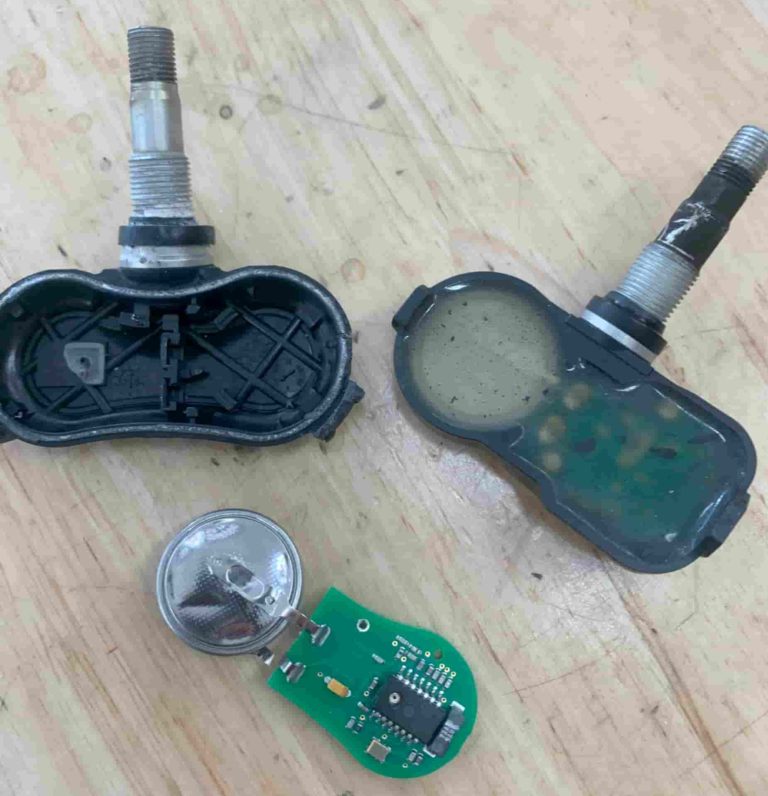Lexus UX TPMS
The Importance of the Tire Pressure Monitoring System
Navigating the nuanced landscape of tire pressure maintenance may seem like a complex task for any Lexus UX hybrid owner. However, understanding the crucial role of the Tire Pressure Monitoring System (TPMS) can enhance vehicle performance, ensure passenger safety, and even contribute to long-term financial savings. This guide will walk you through the ins and outs of TPMS in your Lexus UX hybrid – demystifying its components, exploring the impacts of weather and driving conditions on tire pressure, and explaining why that pesky warning light might illuminate on your dashboard. Further, we delve into the effects of underinflated tires, provide a detailed guide to resetting your TPMS light, and offer handy tips for troubleshooting. Whether you’re dealing with a sudden tire puncture, seasonal changes, or sensor malfunctions, this comprehensive guide ensures you’re never left in the dark about your Lexus UX hybrid’s tire pressure.
How Does the Lexus UX-Hybrid TPMS Work?
The Lexus UX Tire Pressure Monitoring System (TPMS) is an electronic system that is designed to keep track of the air pressure inside the pneumatic tires on your vehicle. Here’s a detailed explanation of how the system works:
Sensors: Each tire (including the spare in some models) is equipped with a TPMS sensor. These sensors are battery-powered and are located inside the tire, attached to the rim. They constantly monitor the air pressure in the tires and transmit this data wirelessly.
Wireless Transmission: Each sensor in the tire has a unique identifier number that corresponds to a specific tire’s position on the vehicle. The sensor’s data is wirelessly transmitted to the vehicle’s TPMS control module, a small computer located inside the car. The sensors transmit data at regular intervals, but may send alerts more frequently if a sudden drop in tire pressure is detected.
TPMS Control Module: The TPMS control module receives the data from each sensor and interprets it. If the pressure in any of the tires falls below a preset limit (usually between 15% and 25% below the recommended pressure), the module triggers an alert.
Dashboard Warning: The alert is sent to the vehicle’s dashboard, where it triggers the TPMS warning light (a symbol that looks like an exclamation mark inside an outline of a tire). The Lexus UX hybrid also provides a digital readout of the exact tire pressure in each tire, and identifies which tire is underinflated.
Response: If the TPMS warning light comes on, it means that at least one of the tires is significantly underinflated. You should stop as soon as it’s safe to do so, and check your tire pressures. If a tire is low, inflate it to the correct pressure.
Resetting the System: After you’ve corrected the tire pressure, you may need to reset the TPMS system. Follow the steps below.
Understanding Tire Pressure
How To Check and Adjust Tire Pressure
Make sure the tires are cold. If your vehicle has been driven, wait at least three hours before checking the tire pressure.
Remove the valve cap from the tire.
Press the tip of the tire pressure gauge onto the valve and read the pressure.
If the tire pressure is below the recommended level, fill the tire with air until the recommended Psi is reached (33 psi). If the tire pressure is above the recommended pressure, release air until it’s correct. (Press the metal stem in the center of the tire valve to let air out. You can use any object like a screwdriver to do this. Be gentle.)
After adjusting the tire pressure, don’t forget to put the valve caps back on to prevent leaks and keep dirt and moisture out.
Repeat this process for each tire, including the spare if applicable.
2023 Lexus UX Hybrid 250h Tire Pressure
TIRE SIZE | FRONT PSI | REAR PSI |
225/50R18 | 33 | 33 |
SPARE | 60 | 60 |
What is "Cold Recommended Tire Pressure"?
Cold tire pressure in the Lexus UX refers to the air pressure in the tires when they are at ambient temperature, typically after the vehicle has been stationary for several hours or driven less than a mile at moderate speed. This pressure is considered ‘cold’ because the tires haven’t been heated up by driving, which can cause the air inside them to expand and the pressure to increase. Checking and adjusting your tire pressure when the tires are cold provides the most accurate measurement, ensuring optimal vehicle performance, fuel efficiency, and safety. Therefore, it’s the best time to make adjustments because it aligns with the manufacturer’s recommended tire pressure settings, which are based on cold tire conditions. It will also prevent overinflating tires.
Does Weather Affect Tire Pressure?
Weather conditions can significantly impact the tire pressure in your Lexus UX. As a general rule, for every 10-degree Fahrenheit change in air temperature, tire pressure will adjust by about 1 PSI (Pound per Square Inch). During colder months as the temperature drops, so too will the pressure in your tires because the air inside the tire contracts causing a decrease in pressure. This is a very common reason why your Lexus UX-hybrid tire pressure light comes on during colder seasons. In hotter weather the air inside the tires expands, which will result in an increase in tire pressure. It’s crucial to regularly check and adjust your tire pressure during seasonal changes.
TPMS Safety Considerations and Warning Signs
Why Does the Lexus UX 250h Tire Pressure Light Come On?
Seasonal temperature changes: A drop in ambient temperature can cause tire pressure to decrease, triggering the warning light.
Tire puncture or leak: A sharp object or road debris like a nail or screw may puncture a tire, causing air loss which will of course activate the warning light.
Faulty tire pressure sensor: Damaged or malfunctioning sensors may provide inaccurate readings, resulting in a false alert. The only way to determine which sensor is faulty is to scan each sensor with a TPMS diagnostic tool.
Valve stem issues: A damaged or leaking valve stem can lead to gradual pressure loss and eventual activation of the tire pressure light. They make kits to replace the rubber gasket that usually goes bad.
Tire damage: Impact from potholes or hitting a curb can cause structural damage like tire bubbles, leading to pressure loss.
Recent tire rotation or replacement: If the tires have been recently rotated or replaced, the TPMS may need recalibration to avoid false alerts. The vehicle’s computer may think the front tires are in the rear and rear in the front after a rotation.
Wheel issues: Damaged, corroded, or cracked wheels can lead to air leaks and pressure loss. This is very common with low profile tires.
Altitude changes: Climbing or descending in elevation can affect tire air pressure and trigger the TPMS warning. An additional 1.5 Psi per Km above sea level is required.
Natural pressure loss: Tires lose air pressure over time due to temperature changes and permeation. Tire dry-rot will happen to tires that sit.
Electrical problems or software issues within the car’s TPMS system. Occasionally the system may have a software update from Lexus.
Snow Tires: If you have a separate pair of wheels for your snow tires, you can either transfer the sensors from your summer wheels or acquire an additional set of 4 sensors for the second pair of wheels. However, if you are using the same wheels for both sets of tires, there is no need to be concerned about this.
Is It Safe To Drive With the Tire Light On?
We strongly caution against operating your Lexus UX hybrid if the tire pressure warning light is illuminated. It’s critical to identify the underlying problem causing the tire light. Is there a nail or screw in the tire? Is there a bead seal leak? Is the tire deflating quickly or slowly? Identifying the root cause will allow you to ascertain whether it’s truly safe to continue driving with the tire light on and for what duration. This underscores the practicality of having a portable tire inflator readily available in your vehicle.
The Impacts of Driving With Underinflated Tires
Driving with underinflated tires in your Lexus UX can have several negative impacts:
Reduced Fuel Efficiency: Underinflated tires can decrease your vehicle’s fuel efficiency. This is because they create more resistance on the road, causing your engine to work harder and burn more fuel.
Increased Tire Wear: When tires are underinflated more of the tire’s surface area touches the road, leading to faster and uneven tire tread wear. This can result in the need for more frequent tire replacements.
Poor Handling: Underinflated tires can negatively impact the handling and responsiveness of your Lexus UX, making it harder to steer, turn, and stop effectively.
Overheating: Underinflated tires are more prone to overheating due to increased friction with the road. Overheating can lead to tire failure such as blowouts.
Decreased Load Carrying Capacity: If the tires are underinflated they won’t be able to carry loads effectively, which could potentially lead to tire damage.
Increased Risk of Tire Damage: Underinflated tires are more susceptible to damage like cuts, punctures, and impacts from potholes or road debris.
Resetting and Troubleshooting the Lexus UX TPMS
Steps to Reset 2023 Lexus UX Hybrid Tire Pressure Light
Adjust the tire pressure to 33 Psi.
Put the Lexus UX in Park and turn the ignition to the ON Position. Push the start button twice without your foot on the brake.
Using the arrow buttons on the left side of the steering wheel, scroll over and select vehicle settings. (the gear icon)
Scroll down using the down arrows on the steering wheel and select TPMS or TPWS.
Hold down the OK button on “Set Pressure” until the tire pressure light blinks 3 times.
Release the button after the tire light has stopped blinking.
Drive the Lexus for 15 minutes or more at 25 mph or more or until the PSI of each tire is displayed on the information display.
When Should You Reset the Tire Pressure Light?
When you change the tire inflation pressure: If the tire pressure has been changed, the system needs to be reset to recognize the new pressure as the standard or normal pressure.
Tire Rotation: If you have replaced or rotated your tires the system needs to be reset. Anytime the wheels are removed and then put back on the car, reset the tire light.
When the tire pressure warning light is on: If the tire pressure warning light is illuminated you should check your tire pressure, adjust your tires to the correct pressure, and then reset the system.
What Tools Do You Need to Reset the Lexus UX-Hybrid TPMS?
The only tool you need to reset the Lexus UX-hybrid is a simple tire pressure gauge. The reset function is built into the Lexus UX-Hybrid. TPMS tools are only needed when the tire pressure system needs troubleshooting or diagnosing. For instance, if a tire pressure sensor needs replacement and recalibration, or if a TPMS fault requires identification of a defective tire sensor, a TPMS diagnostic or relearning tool will be needed.
Resetting the Lexus UX-Hybrid's Entire Electronic System
If persistent issues with the tire warning light remain unresolved despite trying other troubleshooting techniques, it could be necessary to perform a complete reset of the Lexus UX-Hybrid’s electronic system. This is accomplished by disconnecting the 12 volt battery (not the hybrid system). To avoid potential short circuits, you should first disconnect the negative terminal. You’ll need a 10 or 12mm wrench or socket to loosen the terminal nut. By disconnecting the battery, the Engine Control Unit (ECU)’s power supply is cut off, erasing all stored error codes, including the one triggering the tire pressure warning light. This action also resets the computer’s adaptive memory settings. This includes everything from throttle bodies to power seats settings. Upon reconnecting the battery, your Lexus UX-Hybrid will go into a “relearning” mode, recalibrating all of its sensors and actuators. To complete this relearn phase, you’ll need to drive at approximately 50 Mph for at least 30 minutes.
Why is the TPMS Light Flashing?
Your Lexus UX-Hybrid also has a separate warning light to alert you to potential issues with your tire pressure monitoring system (TPMS). It’s called the TPMS malfunction indicator. This warning light uses the same yellow exclamation point as the standard tire pressure warning light on the dashboard. If there is a problem with the TPMS, the light will flash for approximately 60 seconds before staying on. This sequence will occur every time you start your car until the issue is resolved. When your tire light is flashing, the system will not be able to accurately detect low air pressure. Essentially, a flashing tire pressure light usually indicates a problem with the Tire Pressure Monitoring System (TPMS) itself, rather than signaling an issue with the actual tire pressure.
What Causes the TPMS to Malfunction?
Tire pressure sensor battery depletion.
Using non Lexus wheels or tires.
Electronic device interference: Specific electronic gadgets or particular driving circumstances can hinder the TPMS’s capacity to accurately measure tire pressure.
Installing tire chains: The process of fitting chains onto the tires for the snow can lead to a disruption in the functioning of the TPMS.
Window Tints: If your Lexus UX-Hybrid features dark window tints, they could potentially interfere with the radio signal transmission between the TPMS sensors and the receiver.
If the tire pressure is extremely high.
If there is a lot of ice or snow on or around the tire valves.
If wheels without tire pressure sensors are installed on the car.
If the Lexus UX-Hybrid receiver module/ECU does not recognize new tire pressure sensors installed.
Tire Leaks and Solutions
Find the Source of a Tire Leak
Start by measuring the air pressure in each tire to figure out which one is not adequately inflated. Make sure to inflate the tire, as the following steps will not be effective if the tire is completely flat. Next, use a spray bottle filled with a soap and water solution (or Windex), and generously spray the entire tire. Keep a close eye on the bead (where the tire connects to the wheel) and the valve stem. Make sure the entire tire surface is well-soaked. After letting it sit for a bit, closely inspect the tire for any small bubble formations. It’s important to check both the outside and inside of the tire. If there is a leak and the soapy solution has been sprayed, the air escaping from the leak will cause minuscule bubbles to appear at the site of the leak. Be patient and look carefully – if the tire is losing air, there’s a leak hiding somewhere!
Are Tire Plugs Reliable?
Absolutely! Based on my personal experience of using tire plugs to repair thousands of tires, I can assertively vouch for their reliability. Tire plugs are a trustworthy fix for punctures found in the tire’s tread area. Tire plugs are designed to be directly inserted into the hole made by objects like nails or screws, thereby effectively closing the hole and stopping any air leakage. (Remember to remove the puncturing object first.) Made from resilient rubber-like materials, tire plugs are designed to withstand the harsh environment within the tire, which includes drastic changes in air pressure and temperature. If inserted correctly, a tire plug can last throughout the tire’s lifespan without the need for replacement. However, it’s crucial to bear in mind that tire plugs are not suitable for mending the sidewall of the tire.
Is It Safe to Use Tire Sealants?
Tire sealants can serve as a temporary fix for a flat tire on your Lexus UX-Hybrid during emergencies, but they aren’t designed for long-term use. It’s important to be aware that these substances could potentially harm your tire pressure sensors, as the sealant fluid can block or interfere with the sensor’s operation. Furthermore, tire sealants can also cause damage to the tire itself, making it unrepairable or unsuitable for plugging. Moreover, sealants can throw off the tire’s balance, leading to vibrations when driving. Keep in mind that you’re essentially injecting a liquid into the tire. As a general guideline, it’s better to avoid using tire sealants unless there’s no other option. If you end up using a sealant, make sure to visit a tire repair shop as soon as possible for a proper repair!
Advanced Topics
How to Install and Calibrate New TPMS Sensors
To begin, the wheel must be detached from the Lexus UX-Hybrid, and then the tire has to be removed from the wheel to access the sensor. Typically, the old sensor is loosened at its base with a screw and taken out, followed by the valve stem being pulled out through the top of the wheel. With the old sensor removed, you can start installing the new one. Make sure that the new sensor is compatible with the Lexus UX-Hybrid TPMS module. To install the new sensor, use a tire valve removal tool to pull the valve through the valve hole on the wheel. (It’s wise to take pictures of each new sensor’s ID number before installation, as these numbers may be needed later and will be hard to access once the tire is put back onto the wheel.) Once the new sensor is fixed and the tire is reattached to the wheel, the new sensor must be registered with the Lexus UX-Hybrid’s Electronic Control Unit (ECU). This is known as the TPMS “relearning” process. At this point, the ECU is programmed with the new sensor’s unique ID number, enabling it to receive transmissions from the new device. This procedure requires a TPMS relearning tool. Each of the tire pressure sensors must be scanned, and then the tool needs to be synced with the vehicle’s ECU. This is done by connecting the TPMS tool to the Lexus UX-Hybrid’s OBD port, which is located beneath the steering wheel.
TPMS Sensor Batteries
Tire Pressure Monitoring System (TPMS) sensors are powered by built-in batteries designed to last for several years – often the entire lifespan of the tire or even the vehicle itself. However, these batteries are not immortal. On average, they can function properly for about 5 to 10 years, depending on usage and environmental conditions. The sensors are sealed units, which means that once the battery is depleted the entire sensor unit needs to be replaced. The batteries are sealed inside a plastic casing and to gain access to the battery the plastic casing must be broken open. (see image below) As the battery nears the end of its life it may cause the TPMS to send irregular or inaccurate readings, which can lead to the flashing of the TPMS warning light on the dashboard. Regular check-ups and maintenance can help identify weakening batteries ensuring optimal performance of the TPMS.
TPMS Legal Considerations
Do Legal Regulations Require TPMS Sensors?
In numerous regions around the globe, including the United States and Europe, legislation stipulates the necessity of tire pressure monitoring system sensors in vehicles. The TREAD Act of 2000, passed in the U.S., obligates all vehicles made post-September 2007 to have a TPMS. This law is principally targeted towards manufacturers, not the drivers, intended to improve road safety by notifying drivers of significant shifts in tire pressure. Similarly, European rules set forth from November 2012 dictate that all new passenger vehicles must be equipped with a TPMS, without specifying if the system has to be direct or indirect. These regulations primarily aim to mitigate accidents triggered by tire malfunctions.
Will My Lexus UX Hybrid Pass State Inspections With the Tire Pressure Light On?
Yes. In certain states, the tire pressure monitoring system is inspected during a vehicle’s safety examination, but the specific requirements can vary. For example, in New York, the tire pressure light is assessed as part of the inspection process, but it is not a cause for failure. In Texas, the TPMS is checked during the safety inspection but you will not be failed if it isn’t working correctly. I am personally a licensed New Jersey state inspector and in NJ having a functional TPMS in a passenger vehicle is not a requirement. If the tire pressure light is on the vehicle will still pass inspection. Commercial vehicles are a different story because they still require “safety inspections”. (commercial vehicles can be identified by their license plates)The lack of uniformity between states means it is recommended to check with your local Department of Motor Vehicles or other relevant state agencies for the most accurate and up-to-date information.
Conclusion
In summary, tending to your Lexus UX hybrid’s Tire Pressure Monitoring System (TPMS) is not merely a maintenance chore but a commitment to superior performance, safety, and economy. Through understanding the intricate dance of tire pressure dynamics, we’ve debunked the mysteries of TPMS and its warnings, tire conditions, and the art of resetting your TPMS light. So next time your dashboard flashes that tiny tire symbol, instead of a pang of dread, feel a surge of confidence knowing you’re fully equipped to navigate any tire pressure challenge. Keep this guide close – it’s your key to an optimally running Lexus UX hybrid, ready to conquer every road ahead. Remember, the journey is as important as the destination, and your TPMS is the silent guardian ensuring every ride is safe, smooth, and efficient. This article is applicable to all Lexus UX trims and models including the Lexus UX 200h, Lexus UX250h F Sport Design, Lexus UX 250h Premium, and Lexus UX 250h F Sport Handling.








